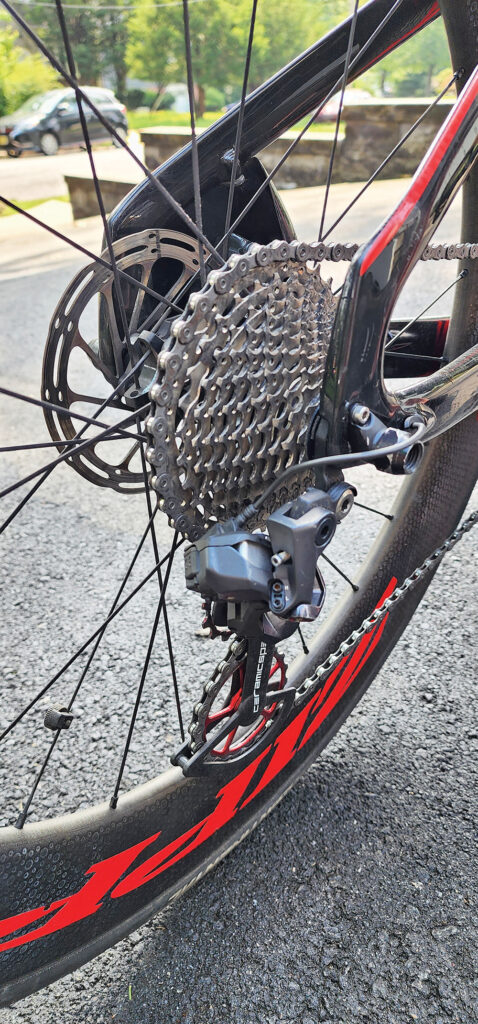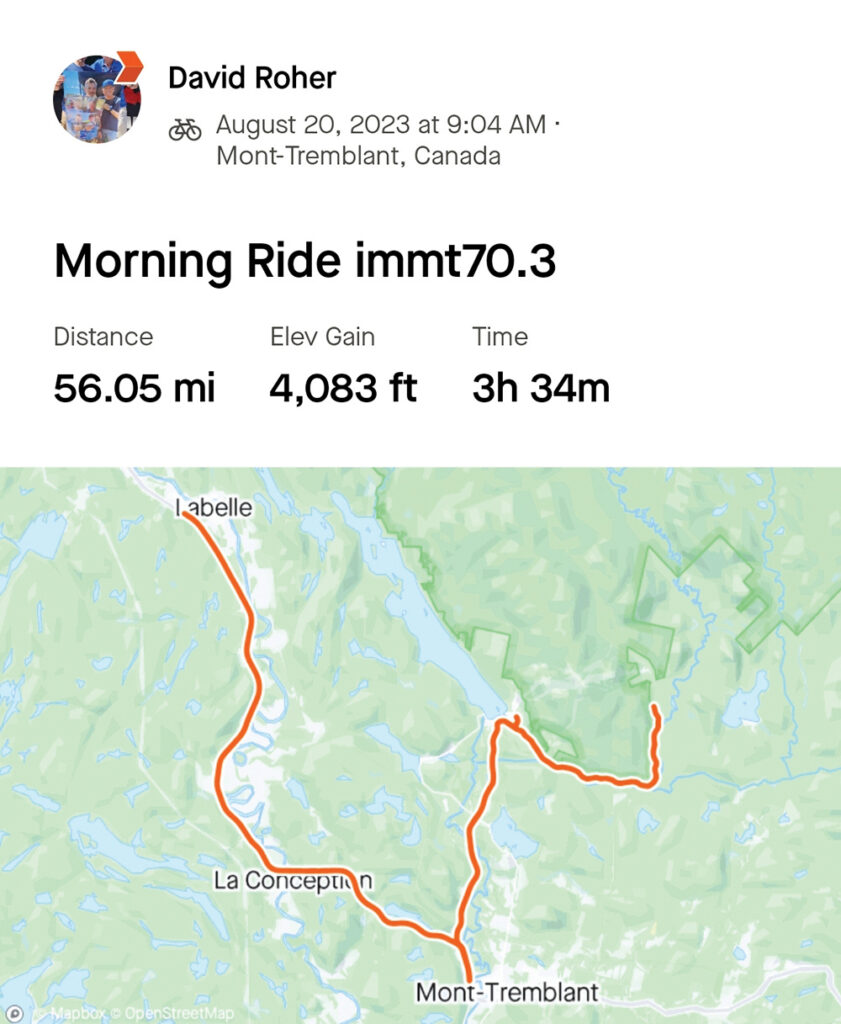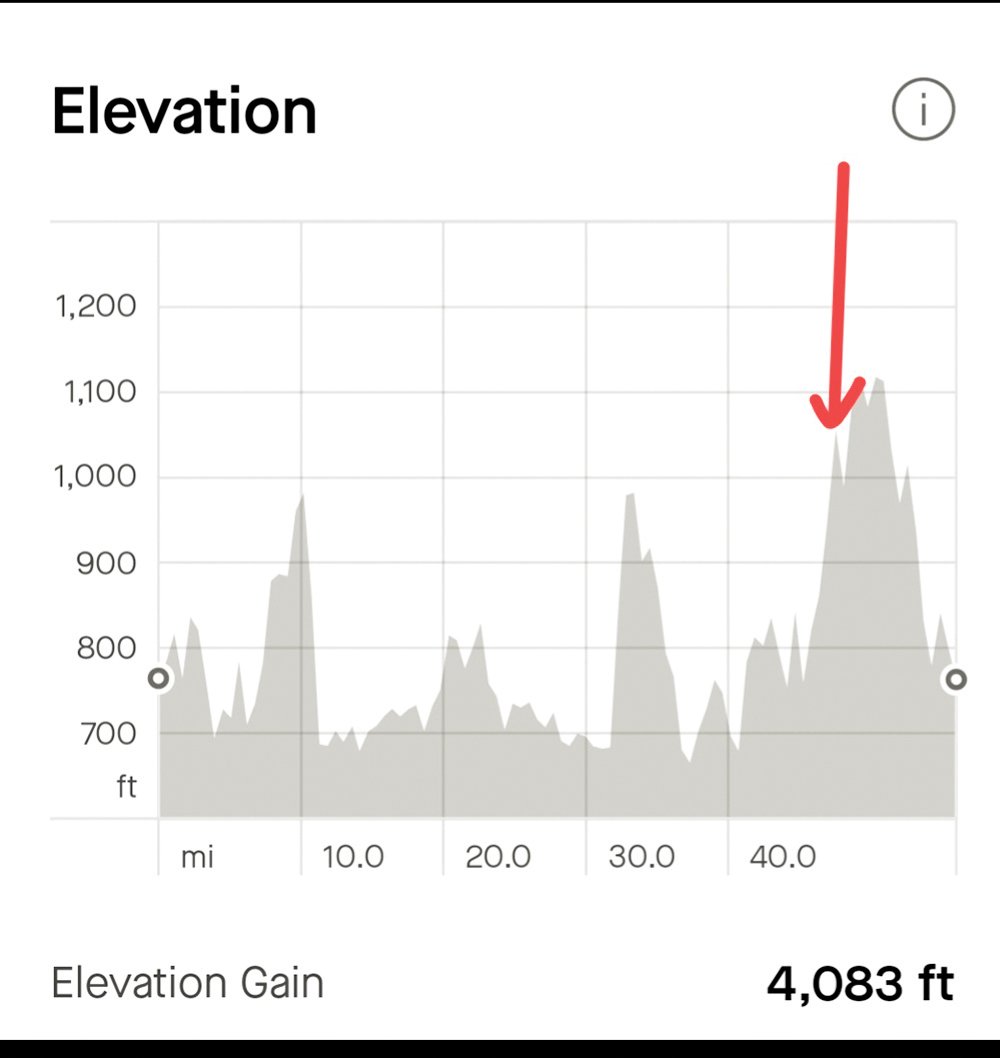
17 Days To Go (August 21)
At mile 30 of the 56-mile bike course the road became a 14% grade climb.
(That’s like climbing a wall.)
Yes, but I had switched my bike computer display to “elevation” instead of data.
(Data?)
How fast I was going, how many watts I was putting out, how fast I was pedaling? Once I was in my easiest gear the only variable became effort. I was going to “feel” how fast I could pedal without exhausting my leg muscles. Power and cadence matter, but instead of worrying about numbers dropping due to elevation, I focused on how my muscles felt as I “grinded it out” to the top. I had been so close to failure at Ironman UK that I needed to use this race to build up confidence again … and it was working.
Then I went up a 9% climb at mile 41 and my chain popped off my bike.
(The chain broke?)
No, but I was prepared for that as well.
(How does one prepare for a broken bicycle chain?)

Two ways:
- I have the bike shop check the life of the chain during my pre-race tune up.
- I have a spare link in my tire changing kit in case of a break.
(How do you determine the life of a bike chain?)
There is a device called a chain checker.
(Wait.)
Yes?
(You are kidding me.)
No, it’s called a chain checker.
(They couldn’t come up with a better name?)
It is also called a chain wear indicator tool.
(So, what caused the chain to fall off?)
The shifter on a bike is called a derailleur. It was invented in France around the turn of the 20th century and it enables the rider to move the chain from bigger to smaller cogs in the back of the bike. There are also a set of cogs connected to
the pedals that cyclists refer to as the big and small rings. Gear ratios on a bike can be complicated to explain …
(So, simplify it for me.)
If you are going up a hill …
(Like you were.)
… like I was, shifting the chain to the biggest cog in the back will make the bike do more of the work.
(So, what caused the chain to drop off the cogs?)
I wouldn’t learn til’ I got home that the cogs, the teeth in the back wheels, were worn down. (So applying pressure while going up a 9% incline cause the chain to slide off a smoothed edge “tooth” of a large back wheel.)

Pretty much.
(So, like, you called AAA for your breakdown?)
In the split second that the chain slipped and all tension went out of the pedal I was pressing on, I unclipped my shoe and pressed on the brake handles to arrest the bike.
(Could you have rolled backwards down the hill, like a cartoon character?)
Roll back, yes. Down the hill no. In all likelihood, I would have fishtailed and knocked out other riders coming up the hill. With a cool calm that impressed even me after I had time to think about it, I dismounted the bike, grabbed the chain, pulled the derailleur forward to create slack and placed the chain back on the biggest cog.
(That was quite the run-on sentence.)
Yeah, my high school English teacher Mrs. Harriet Levitt would probably have taken off points.
I crested the top of the hill and headed back towards the end of the bike course. The last six miles were almost completely downhill. I had just conquered a 4,083 foot climb bike course. I had faced down a challenge on the course mid-race; I was beginning to feel more confident.
- My plan could work.
(What plan?)
The plan to use this race to get my confidence back for a 13 mile climb into the French mountains at the Ironman World Championship.
(That sounds great. Didn’t you have to run a half marathon off the bike?)
Yeah, but it was just half.
(How far is a half marathon?)
13.1 miles.
(After riding 56 miles of hills?)
Yes.
(How did that go?)
David Roher is a USAT certified triathlon and marathon coach. He is a multi-Ironman finisher and veteran special education teacher. He is on Instagram @David Roher140.6. He can be reached at TriCoachDavid@gmail.com.










